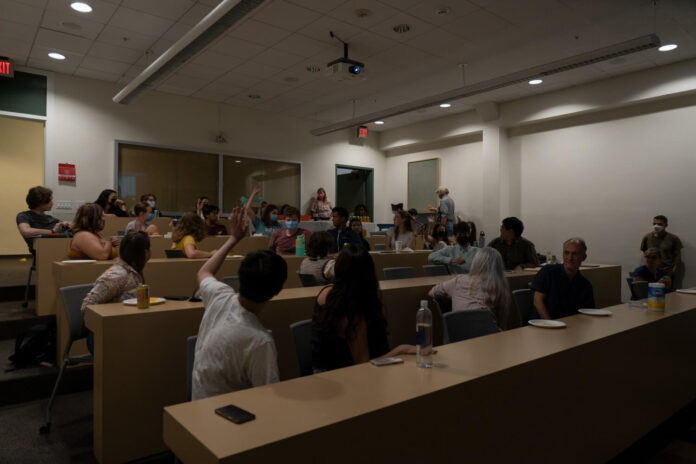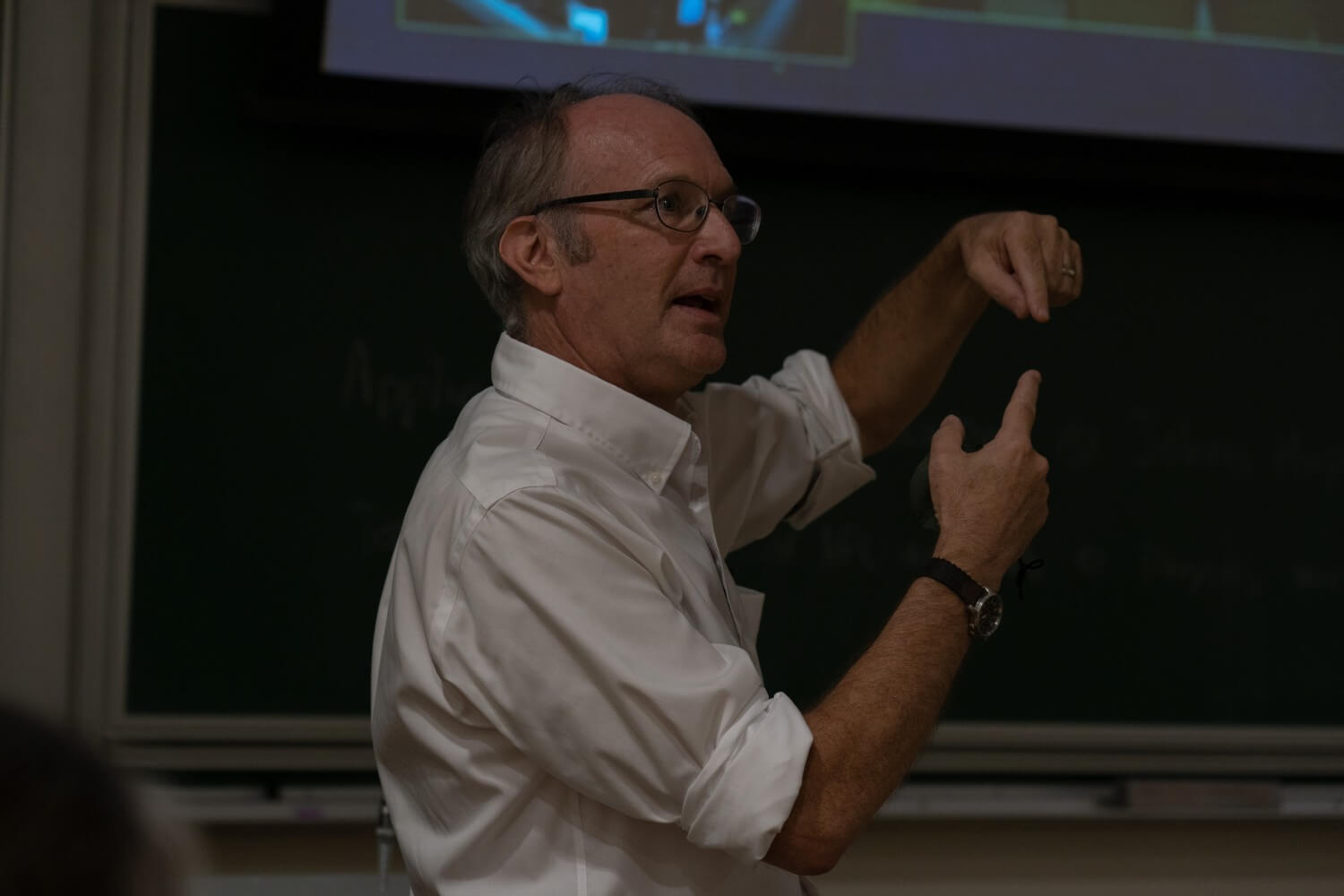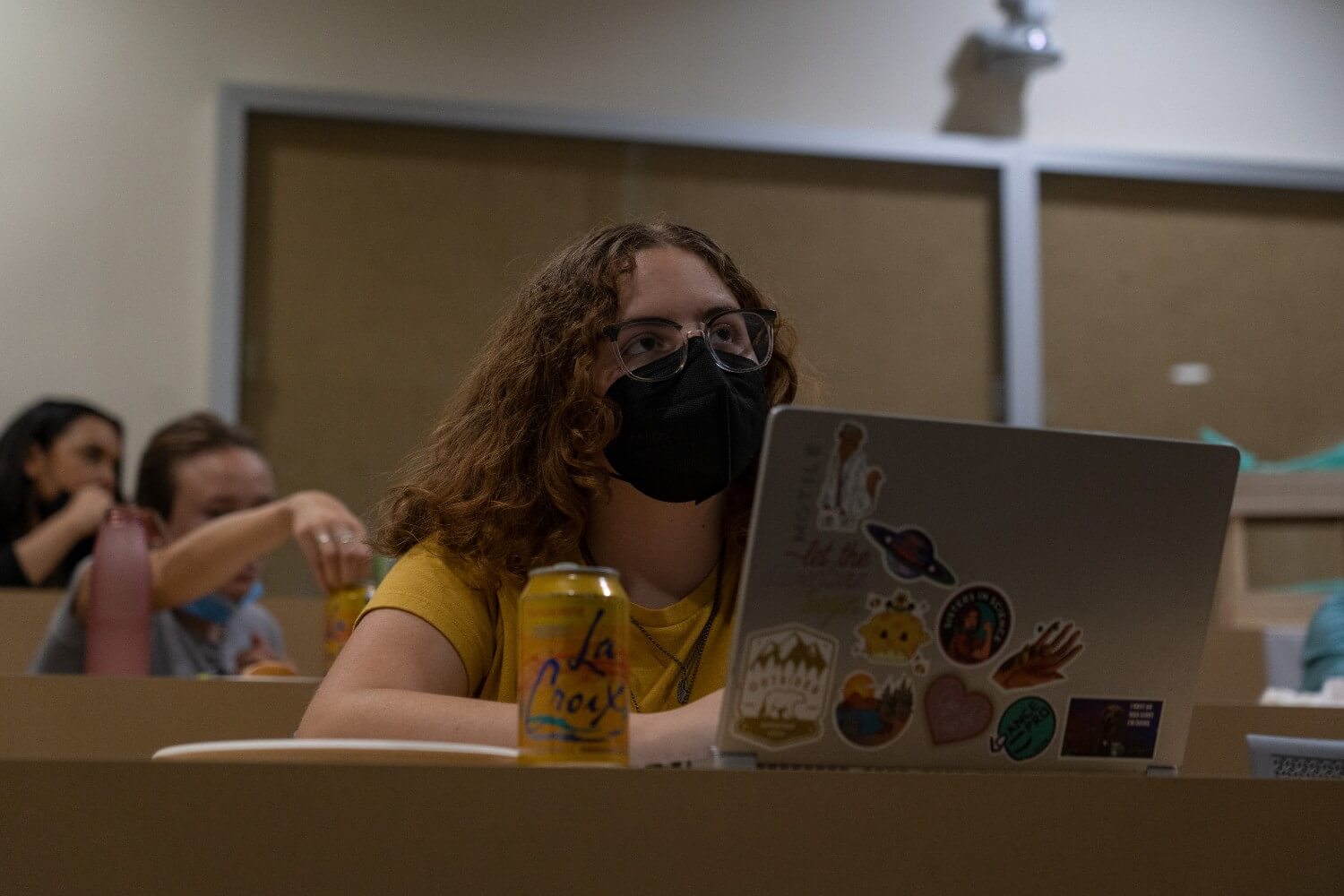
A crowd gathered in Fowler Hall Sept. 26 to watch the National Aeronautics and Space Administration (NASA) execute their first planetary defense test mission. Double Asteroid Redirection Test (DART) was developed and led for NASA by Johns Hopkins University Applied Physics Laboratory (APL) in Maryland, according to Physics Professor Daniel Snowden-Ifft. The spacecraft for DART, which launched last November from Vandenberg Space Force Base in California, was programmed to intercept the orbit of a binary asteroid system consisting of asteroids Didymos and Dimorphos. Snowden-Ifft said the spacecraft was slamming into Dimorphos as a test, not because it poses a threat to humanity. To capture the collision in real time, APL built the Didymos Reconnaissance and Asteroid Camera for Optical navigation (DRACO). As the spacecraft traveled closer to the asteroid at over 14,000 mph, excitement amassed in Fowler.
Snowden-lfft said that in addition to celebrating a historic moment, a watch party was also a great way to bring people together. In over two decades working at the college, Snowden-Ifft said the physics department has never conducted a gathering of this type.

“For these sort of once-in-a-lifetime events, I think it’s just fun to gather and share the moment with friends and colleagues,” Snowden-Ifft said.
Sarah Hall, the physics department services coordinator, said she was inspired to host a watch party after hearing a talk by DART mission team member Dr. Tim Miller, who is also a former colleague of Snowden-Ifft.
“When I went online, I saw APL was recommending to have a watch party of the mission and immediately thought it would be amazing to host one on campus,” Hall said.
Though she now works for the physics department, Hall studied history in college and said that DART is a mission everyone can enjoy. She said that planetary defense is an accessible concept and has even been part of Hollywood films such as Deep Impact.
“I was just talking about this earlier with someone who was an English major — that a lot of physics questions get so into the weeds that not all of us feel like we can participate,” Hall said. “What I think is so amazing about DART is that the subject of planetary defense is something we can all picture because the concepts are simple, even if the science behind doing it is complex.”
Physics major Hailey McDill (sophomore) said she attended the talk by Miller, which led her to join the watch party.
“I had not heard about the DART mission before,” McDill said. “It was nice to know about what this tiny dot is that we are all staring at on the screen and how long people have been working on it.”

Eagerly awaiting the collision, McDill said the event was a perfect way to unite the college community.
“It is a really fun opportunity to learn about things that are kind of outside of your subject area and also a really great chance to get to know people from other major departments,” McDill said.
Brandon Lok (sophomore) said he is an Urban & Environmental Policy (UEP) major but his recent interests brought him to watch the impact.
“I have been reading, and taking an existential philosophy class which has me thinking of bigger threats to human life such as those in space,” Lok said.
Back on Earth, the live stream captured moments of DART mission leaders at APL assuring the spacecraft was on target to strike the asteroid.
Finally at 4:14 p.m, people cheered as the spacecraft flew into the asteroid Dimorphos, according to Ella Raziel (junior) who said she attended the event with her friend.
“It was super exciting,” Raziel said. “I’m not a STEM major, and neither is my friend, but it does not matter what you study, it is just super fun to witness history happen.”
![]()


































